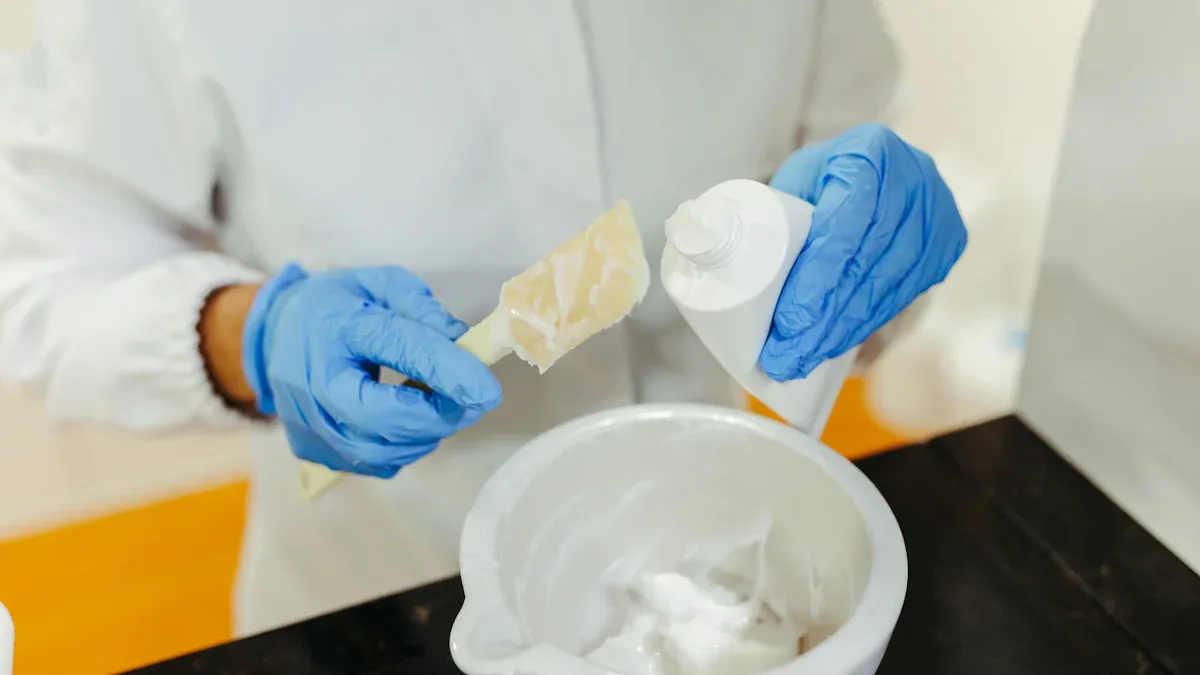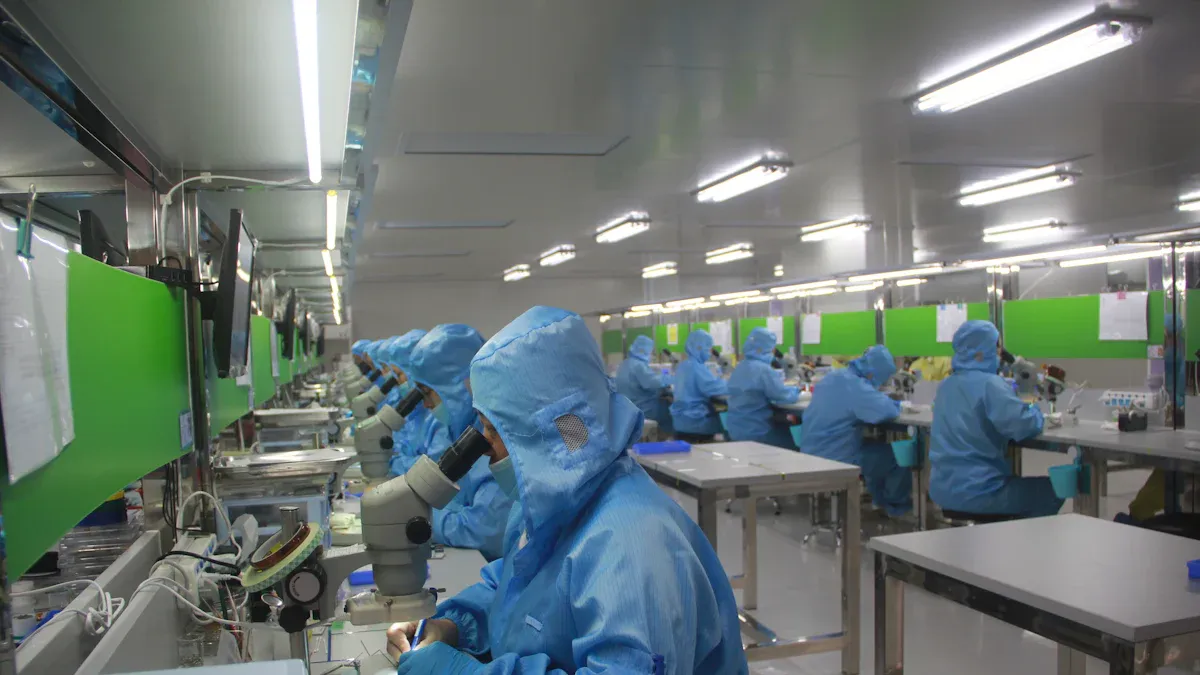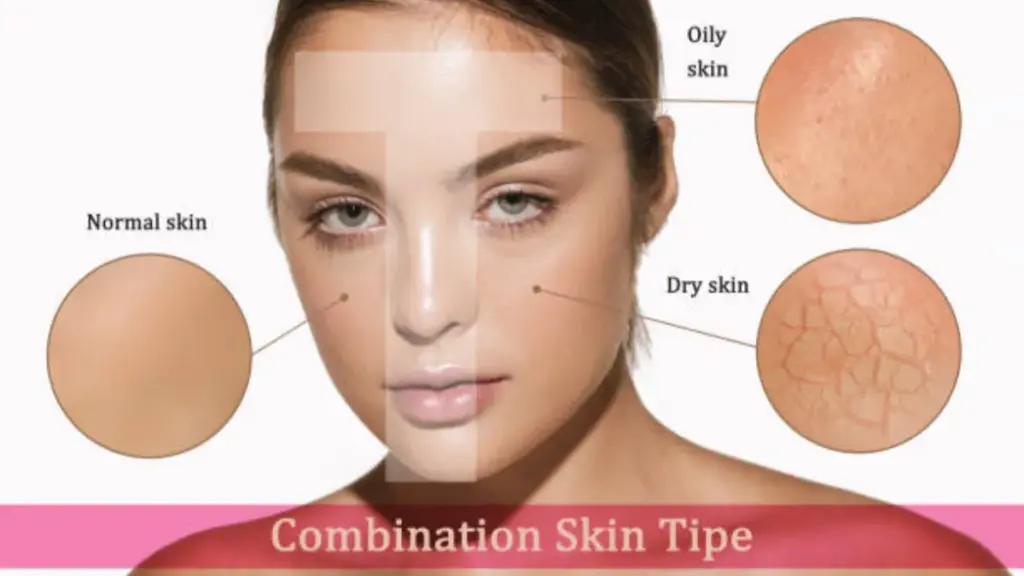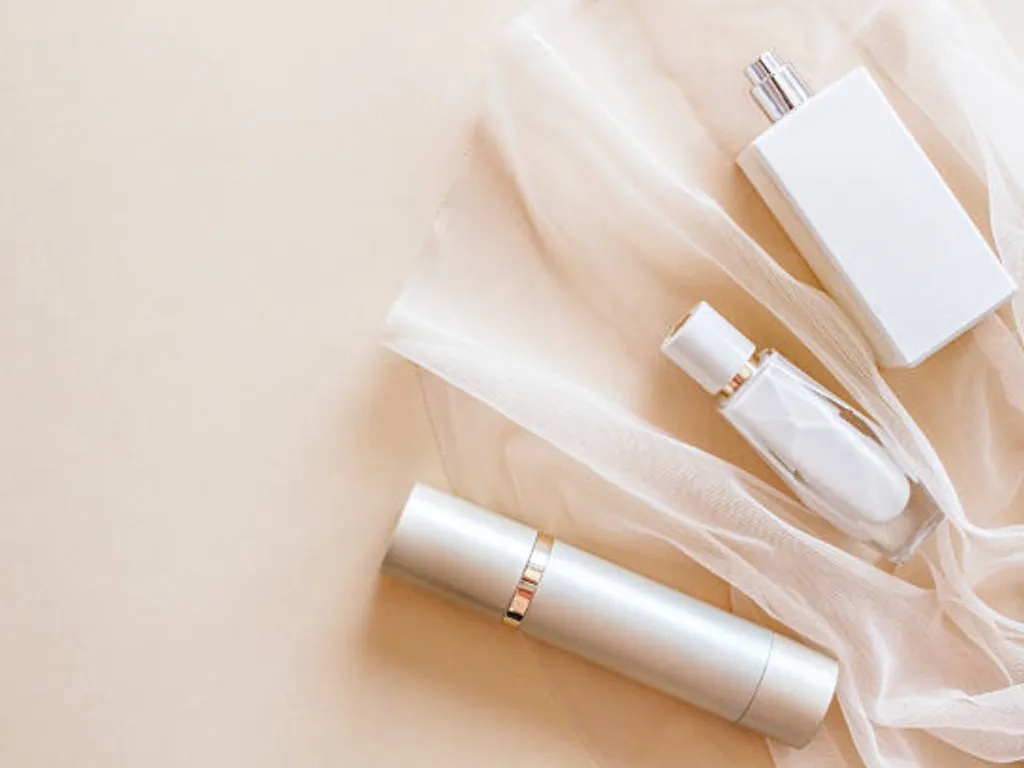
Manufacturing cosmetics demands precision and adherence to strict quality control steps. These measures ensure products remain safe for consumers while maintaining consistent performance. Quality control spans the entire lifecycle of cosmetic product development, from sourcing raw materials to final distribution. Rigorous testing protocols help identify and eliminate hazards, protecting users from health risks caused by contamination or improper formulation.
High standards in production also safeguard brand reputation. Tools such as Hotelling’s T² charts monitor multiple quality parameters at once, enabling early detection of deviations and optimizing processes. This approach reduces costs and enhances efficiency. By prioritizing quality, you ensure compliance with regulations and meet customer expectations.
Raw Material Selection and Testing

Sourcing High-Quality Ingredients for Cosmetics
The foundation of any successful cosmetic product lies in the quality of its ingredients. You should prioritize sourcing from reliable suppliers who adhere to industry standards. Certifications such as ISO and GMP ensure that the ingredients meet stringent quality benchmarks. بالإضافة إلى ذلك, certifications like USDA Organic and Ecocert Natural guarantee the use of natural and sustainable components.
Establishing clear protocols for sourcing and inspecting ingredients is essential. This includes verifying supplier certifications and maintaining meticulous documentation for traceability. By partnering with trustworthy suppliers, you can ensure that your formulation and ingredient selection process aligns with both safety and quality standards.
Testing for Purity, أمان, and Performance
Testing plays a critical role in ensuring the safety and effectiveness of your cosmetics. Microbiological testing confirms that ingredients are free from harmful microorganisms. Stability testing evaluates how products perform under different conditions, such as temperature and humidity. These tests help you identify potential issues early, ضمان جودة متسقة.
In addition to these, sensory tests assess the texture, color, and fragrance of your products. Recording and reporting all testing results according to a Quality Management System (QMS) ensures accountability and compliance. A robust QMS also defines quality objectives and processes, helping you maintain consistency throughout production.
Partnering with Certified Suppliers
Collaborating with certified suppliers strengthens your supply chain and ensures ingredient quality. Suppliers registered under the Modernization of Cosmetics Regulation Act of 2022 (MoCRA) meet FDA requirements, reducing risks associated with unverified sources. Regular audits and certifications like Fair Trade or Leaping Bunny further validate ethical and sustainable practices.
By choosing certified suppliers, you not only enhance the quality of your formulation and ingredient selection but also build trust with your customers. This approach ensures that every product you create meets the highest standards of safety and performance.
Storage and Handling of Ingredients
Maintaining Ingredient Integrity Through Proper Storage
Proper storage ensures the integrity of cosmetic ingredients throughout the production process. You should use sealed containers to protect materials from moisture, dust, and microbial contamination. Label each container clearly with details like identity, lot number, and expiration date. Keeping raw materials off the floor and away from potential contaminants further safeguards their quality.
Environmental controls play a vital role in maintaining ingredient stability. Light-proof containers prevent degradation in photosensitive materials, while low humidity storage avoids moisture-related issues. Refrigerated storage is essential for temperature-sensitive products. Regularly sanitizing storage areas and equipment ensures a clean environment, reducing the risk of contamination.
Preventing Contamination During Handling
Handling ingredients with care is crucial to prevent contamination during the production process. Implement strict hygiene protocols for personnel, including wearing gloves, hairnets, والأقنعة. Train your team to follow best practices when transferring or measuring raw materials.
Periodic testing for harmful microorganisms, such as bacteria or mold, ensures that stored materials remain safe for use. Establish microbial limit values for each ingredient based on its intended application. Validated testing methods provide consistent results, helping you maintain high standards of safety and quality.
Implementing Efficient Inventory Management Systems
Efficient inventory management streamlines the production process and reduces waste. Automated systems provide real-time updates, preventing overstocking and stockouts. Using the First In, First Out (FIFO) method ensures older stock gets used first, minimizing the risk of expired materials.
Case studies highlight the benefits of automation. على سبيل المثال, L’Oréal improved demand forecasting accuracy and reduced inventory levels by 15%, saving over $10 million annually. Sephora optimized inventory across its omnichannel network, reducing markdowns by 20% and increasing sales by 11%. These systems enhance order accuracy and fulfillment speed, boosting customer satisfaction and loyalty.
Precise Formulation and Mixing
Achieving Accuracy in Cosmetic Product Development
Accuracy is essential in cosmetic product development to ensure consistent quality and performance. You must establish clear procedures to monitor batch uniformity and integrity during the formulation process. These procedures help maintain high standards and reduce errors.
A key metric to track is the Quality Control Pass Rate. This rate measures the percentage of products that meet quality standards during testing. You can calculate it using the formula:Quality Control Pass Rate (%) = (Number of Units Passed / Total Number of Units Tested) × 100
Successful companies often achieve pass rates between 95% و 98%, reflecting operational efficiency and strong brand reputation. Striving for such accuracy ensures your products meet customer expectations and regulatory requirements.
Ensuring Uniform Mixing for Consistency
Uniform mixing is critical for creating consistent cosmetic products. Advanced mixing technologies, such as high shear mixers and homogenizer mixers, play a vital role in achieving this. These tools improve production efficiency and ensure stable emulsions, preventing separation in products like lotions and creams.
Consistent blending also enhances the texture and appearance of your formulations. Smooth, even mixtures are essential for delivering high-quality cosmetics. By investing in reliable mixing processes, you can ensure your products maintain their intended performance and appeal.
Leveraging Advanced Equipment for Precision
Using advanced equipment enhances precision in the mixing process. Double planetary mixers, على سبيل المثال, are ideal for high-viscosity applications. Their robust blades ensure thorough blending, even with challenging ingredients. Smart mixing systems, integrated with IoT and AI, take precision a step further. These systems adjust parameters in real-time, ensuring consistent results across batches.
Advanced equipment also increases production efficiency. It reduces mixing time, shortens lead times, and ensures uniform product quality. This versatility makes it suitable for a wide range of cosmetic product development needs, helping you deliver exceptional results every time.
Requirement | وصف |
|---|---|
In-process controls | Written procedures must be established to monitor batch uniformity and integrity. |
Adequacy of mixing | Procedures must ensure uniformity and homogeneity in the mixing process. |
Testing specifications | Valid specifications should be derived from previous process averages and variability estimates. |
By combining precise formulation techniques, uniform mixing, and advanced equipment, you can elevate your cosmetic product development process to meet the highest standards.
Packaging Quality and Safety
Selecting Durable and Safe Packaging Materials
Choosing the right packaging materials is vital in cosmetic production. Durable and safe packaging ensures your products remain intact and effective throughout their lifecycle. You should prioritize materials that meet three key standards:
Product Compatibility: Prevents unwanted chemical reactions that could compromise the quality of your cosmetics.
Product Protection: Shields products from air, رُطُوبَة, ضوء, and temperature changes, preserving their integrity.
Durability: Reduces the risk of leakage or breakage during transport and storage.
To verify durability, you can conduct tests such as drop tests, compression tests, vibration tests, thermal tests, and UV light exposure tests. These evaluations help ensure your packaging meets the highest quality and safety standards, protecting both your products and your brand reputation.
Testing Packaging Compatibility with Cosmetics
Packaging compatibility testing is essential to ensure your materials work well with your formulations. This process evaluates how packaging interacts with cosmetics under various conditions. على سبيل المثال, general compatibility testing examines the effects of temperature, ضوء, and humidity over several weeks or months. Stress cracking tests assess the material’s resistance to cracking, while post-processing tests evaluate the impact of additional processes like thermal shock.
وصف | Conditions/Duration | |
|---|---|---|
General Compatibility Testing | Evaluates how packaging interacts with the product under various environments. | -20°C to 50°C, light exposure, humidity, 4-8 weeks to several months |
Stress Cracking Testing | Assesses package resistance to cracking under stress. | 23°C to 50°C, 4-8 weeks or longer |
Post-Processing Compatibility Testing | Examines effects of additional processes on compatibility. | 23°C and 40°C, cyclic thermal shock, 10 أيام |
Evaluation Criteria | Assesses appearance, mechanical properties, weight loss, وأكثر. | After testing period |
These tests ensure your packaging maintains its integrity and supports the overall quality and safety of your cosmetic products.
Designing Tamper-Proof and User-Friendly Packaging
Tamper-proof packaging plays a crucial role in cosmetic manufacturing units. It protects your products from unauthorized access and contamination, ensuring consumer safety. على سبيل المثال, the 2019 ice cream tampering incident highlighted the importance of tamper-evident designs in maintaining trust and preventing losses.
You can enhance your packaging by incorporating features like seals, shrink bands, or breakable caps. These additions not only deter tampering but also reassure customers about the integrity of your products. Tamper-proof designs also help you comply with legal safety standards, further strengthening your brand’s reputation.
بالإضافة إلى ذلك, user-friendly packaging improves the consumer experience. Easy-to-open designs, clear labeling, and ergonomic shapes make your cosmetics more appealing and accessible. By focusing on both safety and usability, you can create packaging that aligns with the high standards of your cosmetic manufacturing unit.
Regulatory Compliance and Documentation
Navigating FDA and Global Regulatory Requirements
Understanding and adhering to regulatory standards is essential for maintaining the safety and quality of your cosmetics. The FDA does not require pre-approval for cosmetics, but you must ensure your products comply with its guidelines. على سبيل المثال, formulations must exclude prohibited ingredients like Bithionol and Chloroform. Accurate labeling is another critical control point. It builds consumer trust and prevents misbranding issues by clearly stating product names, net quantities, and ingredient lists.
Globally, regulatory compliance becomes more complex. ال EU Cosmetic Regulation 1223/2009 mandates detailed safety reports and product registration through the Cosmetic Products Notification Portal (CPNP). بالإضافة إلى ذلك, China’s Cosmetic Supervision and Administration Regulation (CSAR) emphasizes the responsibilities of manufacturers in ensuring product safety. Staying informed about these regulations helps you navigate the challenges of international markets while maintaining high production and quality control standards.
Maintaining Comprehensive Documentation for Audits
Comprehensive documentation is a cornerstone of good manufacturing practices. It ensures transparency and prepares you for audits. You should maintain detailed records of raw materials, manufacturing processes, finished products, and distribution. على سبيل المثال, documenting the disposition of rejected materials and the quantities used in batch production ensures traceability.
نوع الأدلة | وصف |
|---|---|
Raw Materials | Records of raw materials and primary packaging materials must be maintained. |
تصنيع | Document the kinds, lots, and quantities of materials used in production. |
Finished Products | Include sampling, laboratory controls, and test results. |
Distribution | Record initial interstate shipment and consignees. |
These records not only support regulatory compliance but also enhance your ability to identify and address critical control points in production.
Staying Updated on Industry Standards
The cosmetic industry evolves rapidly, with new regulations and standards emerging regularly. Staying updated ensures your products meet the latest requirements. على سبيل المثال, the EU recently expanded its fragrance allergen labeling rules, increasing transparency and consumer safety. بصورة مماثلة, China’s 2023 regulations introduced stricter guidelines for cosmetic sampling and online operations.
Adopting the ISO 22716 standard is another way to align with global best practices. This standard focuses on good manufacturing practices, emphasizing quality control and safety throughout production. By staying informed and proactive, you can adapt to changes in regulatory standards and maintain your competitive edge.
Final Product Testing and Inspection

Conducting Microbiological and Stability Testing
Microbiological and stability testing ensures your cosmetics remain safe and effective throughout their shelf life. Microbiological tests evaluate the presence of harmful microorganisms, while stability testing monitors changes in color, odor, and texture under different conditions. These tests help you identify potential risks early and maintain product quality.
Stability testing protocols often include microbiological assessments to verify preservative efficacy. You should conduct tests at various time points, considering environmental factors like temperature and humidity. على سبيل المثال:
Study/Guideline | النتائج الرئيسية |
|---|---|
Guide to OTC & Cosmetic Stability Testing | Highlights the importance of microbiological testing in stability protocols. |
Microbiological Stability of Cosmetics | Emphasizes microbial contamination control and the use of Challenge Tests. |
SCCP’s Notes of Guidance | States pathogenic microorganisms must be absent in cosmetics for children. |
EC Regulation no. 1993/2009 | Mandates microbiological stability assessment over time. |
These practices ensure your products meet safety testing standards and remain stable during their lifecycle.
Visual Inspection for Defects and Inconsistencies
Visual inspections play a critical role in detecting defects and inconsistencies in cosmetic products. You can identify issues such as packaging damage, color mismatches, or uneven textures through this process. Detection ratings help you gauge the effectiveness of visual inspections:
Detection Rating | وصف |
|---|---|
1 | Will always be detected |
10 | No chance of detection |
2-9 | Varies based on complexity |
Visual inspections typically achieve detection ratings between 6 و 10 for complex defects. Gauging methods range from 2 ل 6, while error-proofed systems score between 1 و 4. These ratings ensure your products meet customer expectations during final product inspections.
Batch Testing for Quality Assurance
Batch testing verifies the consistency and safety of each production batch. You should implement methodologies like in-process testing, sensory evaluation, and accelerated stability testing to monitor key parameters. على سبيل المثال:
Methodology | وصف |
|---|---|
Stability Over Time | Monitors changes in color, odor, or texture throughout shelf life. |
اختبار في العملية | Regularly checks viscosity, PH, and microbial levels during production. |
Statistical Process Control | Tracks key parameters and triggers corrective actions for deviations. |
Reference Samples | Retains samples from each batch for future comparisons. |
Simulates product use to assess preservative efficacy. |
These methods ensure your products meet established acceptance criteria. If results exceed limits, corrective actions prevent contamination and maintain quality. Batch testing strengthens your quality assurance process, ensuring safe and consistent cosmetics for your customers.
Continuous Improvement and Feedback
Leveraging Customer Feedback for Refinement
Customer feedback serves as a powerful tool for refining cosmetic products. Listening to your audience helps you identify areas for improvement and align your offerings with their preferences. Social media platforms, post-purchase surveys, and product reviews provide valuable insights into customer needs. من خلال تحليل هذه البيانات, you can enhance your formulations, التعبئة والتغليف, and overall product experience.
على سبيل المثال, brands like Sephora and Fenty Beauty have successfully leveraged customer feedback to refine their products. Sephora expanded the shade range of its Cream Lip Stain line after analyzing reviews, while Fenty Beauty responded to criticism about inclusivity by introducing more shades. These actions not only improved product quality but also strengthened customer loyalty.
ماركة | Evidence of Customer Feedback Impact | وصف |
|---|---|---|
Lush Cosmetics | Utilized social media listening tools to identify trends and preferences. | Developed new product lines that align with customer values. |
Sephora | Analyzed customer reviews to refine product offerings. | Expanded the shade range of the Cream Lip Stain line based on customer preferences. |
فنت الجمال | Responded to criticism about shade availability by expanding its range. | Reinforced commitment to inclusivity and diversity after initial launch feedback. |
Glossier | Incorporated user-generated content into marketing strategies. | Built a community-focused brand around the concept of ‘democratizing beauty’. |
Estée Lauder | Implemented post-purchase surveys to gather insights for future improvements. | Fostered continuous dialogue with customers to enhance satisfaction and product development. |
By integrating customer feedback into your process, you can achieve continuous improvement and deliver products that resonate with your audience.
Conducting Regular Quality Audits
Quality audits ensure your manufacturing process remains efficient and compliant with industry standards. These audits help you identify weaknesses and implement corrective actions to maintain high-quality production. Regular evaluations of your facilities, equipment, and procedures prevent errors and improve consistency.
You should establish a schedule for internal audits and document findings meticulously. Focus on areas such as ingredient sourcing, formulation accuracy, and packaging integrity. Audits also provide opportunities to assess compliance with regulatory requirements, ensuring your products meet safety standards. By conducting regular audits, you reinforce your commitment to continuous improvement and build trust with your customers.
Investing in Employee Training and Development
Your team plays a crucial role in maintaining quality throughout the manufacturing process. Investing in employee training ensures your staff understands best practices and stays updated on industry advancements. Training programs should cover topics like hygiene protocols, equipment operation, والامتثال التنظيمي.
Development initiatives, such as workshops and certifications, enhance employee skills and foster a culture of excellence. على سبيل المثال, training on advanced mixing technologies can improve formulation accuracy, while sessions on inventory management systems can streamline operations. A well-trained team contributes to continuous improvement by reducing errors and increasing efficiency.
Encourage feedback from employees to identify areas for growth. Their insights can help you refine processes and adapt to changing industry demands. By prioritizing training and development, you empower your team to uphold high standards and drive innovation.
Mastering makeup manufacturing begins with implementing seven essential quality control steps. These include selecting high-quality raw materials, storing and handling ingredients properly, ensuring precise formulation, testing packaging safety, complying with regulations, inspecting final products, and fostering continuous improvement. Each step plays a vital role in creating safe and consistent cosmetics.
Prioritizing quality control safeguards your brand reputation and builds customer trust. It ensures your products meet safety standards and perform reliably.
Adopting these practices strengthens your manufacturing process and helps you deliver exceptional cosmetics that exceed expectations.
التعليمات
What is the most critical step in makeup manufacturing?
Every step is important, but raw material selection stands out. High-quality ingredients ensure your product meets safety and performance standards. Testing for purity and partnering with certified suppliers further guarantees consistent results.
How can you ensure packaging safety for cosmetics?
You should conduct compatibility tests to confirm that packaging materials work well with your product. These tests evaluate durability, resistance to environmental factors, and chemical interactions, ensuring your cosmetics remain safe and effective.
Why is batch testing essential in quality control?
Batch testing verifies the consistency and safety of each production batch. It helps identify defects early, ensuring your product meets established quality standards. This step protects your brand reputation and builds customer trust.
How does customer feedback improve cosmetic products?
Customer feedback highlights areas for improvement. By analyzing reviews and surveys, you can refine formulations, enhance packaging, and align your product with consumer preferences. This process fosters loyalty and ensures continuous improvement.
What role does employee training play in quality control?
Well-trained employees uphold high standards throughout the manufacturing process. Training programs improve skills in areas like hygiene, equipment operation, والامتثال التنظيمي. A knowledgeable team ensures your product consistently meets quality expectations.
















